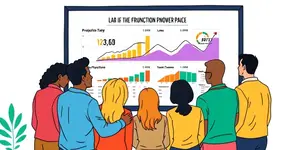
For many entrepreneurs, the bridge between a promising concept and a thriving enterprise is paved with capital challenges. Traditional lenders often require extensive credit histories, substantial collateral, and lengthy approval processes. These barriers can leave small business owners stranded in a cycle of underinvestment, unable to seize critical growth opportunities or navigate seasonal fluctuations.
Enter microloans: a powerful, targeted financing tool designed to empower startups, minority-owned enterprises, and businesses in underserved areas. With flexible terms, personalized support, and relatively small funding amounts, microloans can catalyze expansion and innovation when traditional banking falls short.
Microloans are typically small loans up to $50,000 per application, with the average U.S. SBA microloan hovering around $13,000. They are underwritten by microlenders, community development financial institutions, and SBA intermediaries to support working capital, inventory purchases, equipment upgrades, and other essential expenses.
Specifically geared toward startups, women-owned businesses, and those with limited credit, microloans offer an accessible entry point for entrepreneurs who might otherwise face rejection from conventional banks. By focusing on character and repayment capacity, microlenders assess business plans and projections rather than demanding pristine credit scores alone.
Traditional lenders can present numerous obstacles for small businesses. From demanding collateral requirements to rigid credit score thresholds, many entrepreneurs find themselves excluded from mainstream financing avenues. Lengthy approval timelines further exacerbate cash flow gaps, forcing owners to delay expansion or forego marketing initiatives.
Microloans counter these challenges with a suite of advantages:
The effectiveness of microloans is borne out by data. In 2023 alone, the SBA disbursed over $87 million through more than 5,500 microloans. Of those, 35 percent reached Black-owned businesses and 15 percent supported Latino-owned enterprises, demonstrating a tangible commitment to economic equity and inclusion.
On a global scale, microfinance institutions served 211 million borrowers in 2013, including 114 million of the poorest individuals. This model has proven critical in lifting communities out of poverty and fostering entrepreneurial resilience.
Applying for a microloan typically involves evaluating personal credit, business age, and revenue. However, microlenders place significant emphasis on the borrower’s business plan, cash flow projections, and overall repayment strategy. This approach enables new ventures and businesses with modest track records to qualify.
Key eligibility criteria often include:
The application process generally unfolds in four stages: assessing eligibility, selecting a suitable microlender, submitting a comprehensive application, and receiving approval based on character and repayment capacity.
What truly sets microloans apart is the array of non-financial services offered by many microlenders. Borrowers frequently gain access to business training and mentorship, networking events, and online workshops covering topics from bookkeeping to digital marketing.
These resources can prove invaluable in maximizing the impact of borrowed funds. By pairing capital with education, entrepreneurs learn how to manage cash flow, negotiate supplier contracts, and develop robust growth strategies, ensuring their microloan investment yields sustainable returns.
Microloan APRs range widely, typically from 14 percent for community lenders up to nearly 100 percent for certain high-risk or informal lenders. SBA-backed microloans tend toward the lower end of that spectrum, oftentimes between 8 and 13 percent APR. Loan terms usually span up to six years, with repayment schedules tailored to cash flow cycles.
Responsible borrowing entails comparing offers across lenders, understanding all fees, and mapping out a realistic repayment plan. Entrepreneurs should avoid over-borrowing and ensure that funds directly support growth initiatives rather than simply bridging ongoing operating deficits.
Microloans have emerged as a catalyst for social and economic transformation, particularly within underserved communities. By channeling capital to minority entrepreneurs and low-income areas, microlenders help bridge persistent funding gaps and foster greater economic inclusion.
In urban neighborhoods and rural towns alike, these loans have enabled small manufacturers to upgrade equipment, retailers to expand inventory, and service providers to launch marketing campaigns—contributions that reverberate through local economies.
To maximize the benefits of a microloan, entrepreneurs should adopt a strategic approach to preparation and management. Crafting a detailed business plan, aligning loan amounts with specific objectives, and establishing clear metrics for success can make the difference between incremental gains and transformative growth.
Essential best practices include:
By adhering to these guidelines, small businesses can harness microloan funds to achieve lasting scalability, moving from survival mode into a trajectory of success and resilience.
Choosing a microloan is not merely about securing capital—it’s about forging a partnership with lenders who invest in your vision and champion your growth. With the right planning, mentorship, and financial stewardship, microloans can accelerate projects, launch new product lines, and solidify your business’s presence in competitive markets.
In an era where agility and innovation determine success, microloans stand out as a nimble financing solution, empowering entrepreneurs to transform challenges into opportunities. Embrace microloans today, and unlock the next phase of growth for your small business.
References













